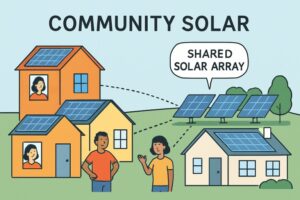Table of Contents
- Introduction
- Advancements in Solar Panel Technology
- Energy Storage Solutions
- Integration of Solar Energy in Architecture
- Solar-Powered Transportation
- Community Solar Initiatives
- Agrivoltaics: Combining Agriculture and Solar Energy
- Solar Energy and Hydrogen Production
- Future Outlook
Introduction
The global shift toward sustainable energy isn’t just a trend—it’s a necessity. As climate concerns mount and resources dwindle, solar energy has become a leading force for a cleaner future. The latest innovations in solar technology are making it easier than ever for communities, businesses, and individuals to access cost-effective, renewable power. For those interested in actionable, local solutions, exploring Asheville solar services offers an ideal way to participate in this energy revolution while supporting a low-carbon economy.
With remarkable advances in panel efficiency, sophisticated integration into urban landscapes, expanded storage options, and new uses in transportation and agriculture, solar energy’s potential has never been greater. These breakthroughs have not only lowered the barrier to entry for homeowners but also empowered municipalities and entire industries with scalable, resilient clean power strategies.
Advancements in Solar Panel Technology
Solar panel efficiency has broken through historic barriers, with the arrival of perovskite tandem cells leading the charge. These next-generation panels can convert more sunlight into electricity than ever, often exceeding 28% efficiency in laboratory settings. Companies such as Oxford PV are racing to commercialize these breakthroughs, promising an era where solar energy is abundant and affordable for homeowners and larger enterprises. For a deeper dive into emerging solar innovations and their impact on the global energy landscape, Axios provides a comprehensive overview in their latest renewable energy technology report.
Energy Storage Solutions
Any intermittent energy source faces the challenge of storage, but recent advancements in battery technology are changing the landscape. Today’s lithium-ion and solid-state batteries offer unprecedented lifespans and power density, allowing stored solar energy to be drawn upon at night or during overcast periods. Grid-scale energy storage is already contributing to enhanced grid stability. At the same time, home-based systems allow families to maintain operations during outages or peak demand, reducing reliance on fossil fuel-based grid energy. According to Axios, these advancements pave the way for a reliable and flexible renewable grid worldwide.
Integration of Solar Energy in Architecture
The marriage of aesthetics and sustainability is being realized through building-integrated photovoltaics (BIPV). Unlike traditional panels, BIPVs are designed to be part of a building’s structure, replacing materials in roofs, facades, or glass. This integration not only maximizes energy generation but also preserves (or even enhances) architectural appeal. Forward-thinking urban planners and architects are leveraging BIPVs to turn skyscrapers, schools, and offices into self-sustaining energy generators, making entire cities greener, building by building. More inspiration on this trend and its global adoption is available from Axios.
Solar-Powered Transportation
Transportation is seeing a green transformation, with electric vehicles (EVs) beginning to integrate solar cells into their exteriors. While range limitations currently restrict the broad use of fully solar-powered cars, buses, and trains, hybrid approaches dramatically improve fuel efficiency and reduce local emissions. Pilot projects for solar roadways and solar-charging infrastructure are emerging, indicating that as these technologies scale, entire transit networks could one day run primarily on the sun’s energy. For instance, Axios reports on innovative curbside EV chargers powered by the sun.
Community Solar Initiatives
Community solar programs offer a game-changing alternative for those unable to install solar panels personally. These shared installations let multiple households, renters, and small businesses buy into or subscribe to a portion of a large solar array. The electricity produced is credited to their utility bills, democratizing access to clean energy savings and empowering neighborhoods to transition together. Community-driven projects have also proven a powerful tool for local engagement and education, as highlighted by resources from the U.S. Department of Energy.

Agrivoltaics: Combining Agriculture and Solar Energy
Innovative land-use solutions like agrivoltaics show that food and energy production coexist harmoniously. Farmers see advantages such as improved microclimates for sensitive crops, reduced water evaporation, and added protection from unpredictable weather by allowing crops to grow beneath elevated solar panels. Studies have shown that certain crops thrive in these environments while simultaneously producing clean electricity for surrounding communities.
Solar Energy and Hydrogen Production
Solar-driven electrolysis, which splits water into hydrogen and oxygen, is emerging as a pivotal technology for the energy transition. Green hydrogen produced via solar power can be a clean, storable energy carrier to fuel vehicles, heat buildings, and power industry without emitting CO₂. As infrastructure develops, solar hydrogen stands poised to play a major role in sectors where electrification is challenging, providing another path to deep decarbonization.
Future Outlook
The momentum of innovation in solar technology promises a decade of accelerated adoption and transformative change. As efficiencies rise, costs fall, and the integration with storage and grid technologies deepens, solar solutions will be foundational in reaching global sustainability goals. Policymakers, companies, and individuals who embrace these advancements are not only investing in their energy future. Still, they are also actively reducing their carbon footprint and supporting a more resilient, equitable energy system for future generations.







